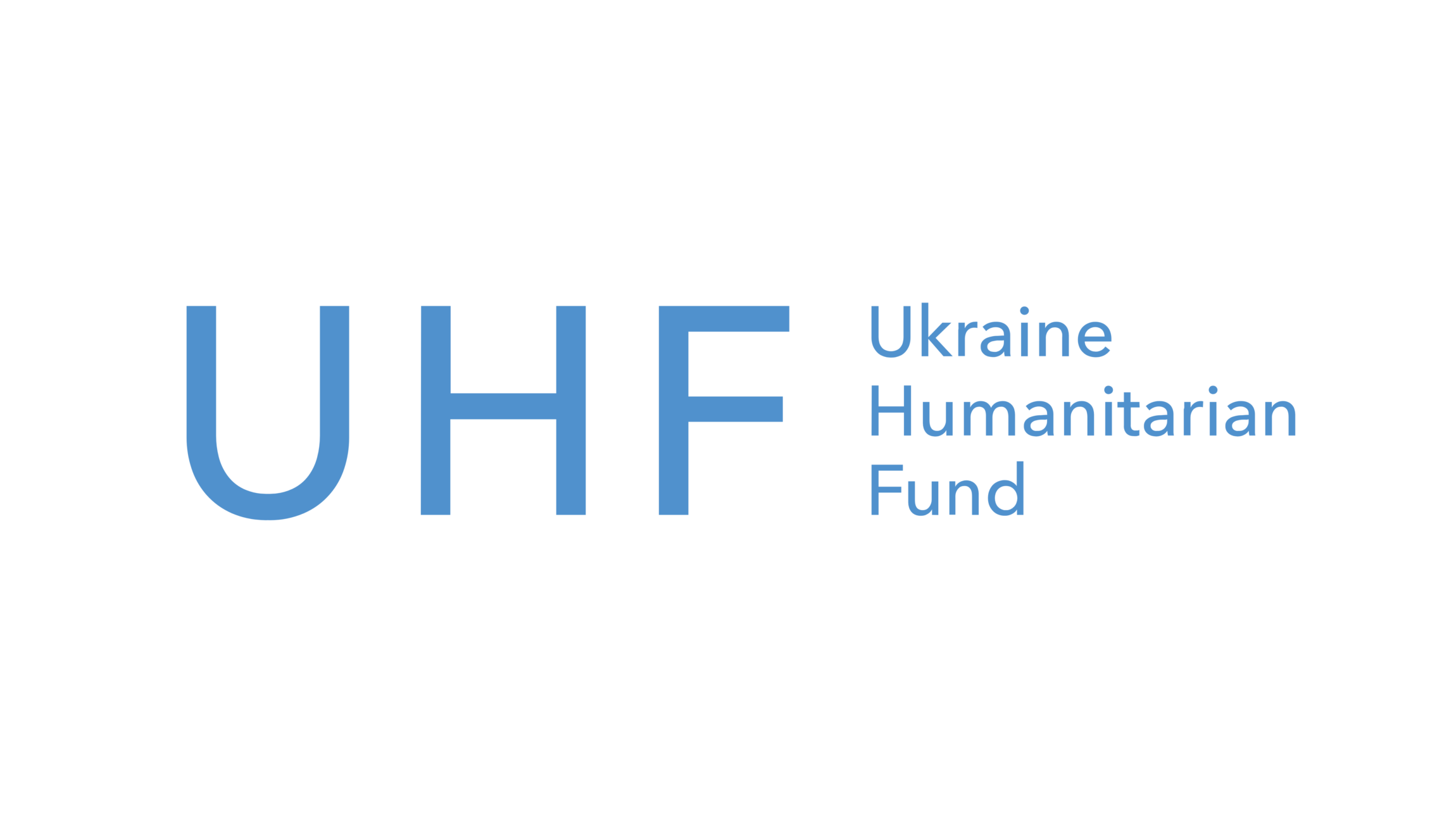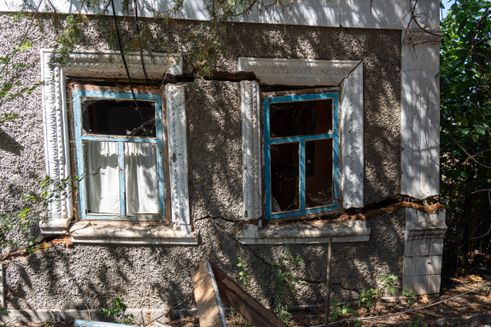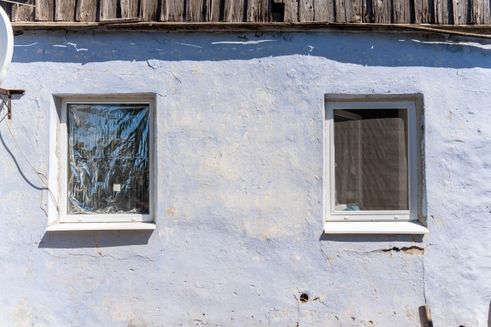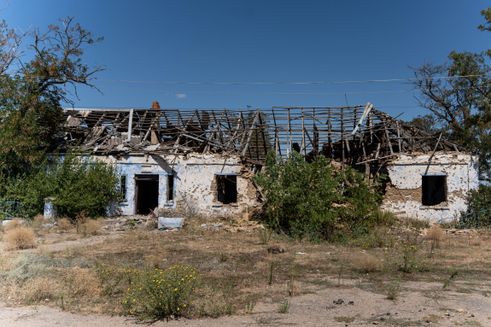It came as a surprise when the residents of the quiet village of Vasylivka, Mykolaiv Oblast, suddenly started hearing fighting and bombardments in 2022. For the residents in the village, surrounded by rolling hills and winding rivers, being caught at the frontline of a devastating conflict was unimaginable.
For Alyna and many others in Ukraine, it nonetheless became their new reality. Alyna’s home was devastated not only by heavy bombardments but also by the catastrophic flooding that followed the Kakhovka dam explosion in June 2023.
How many people have been supported?
The project funded by the Ukraine Humanitarian Fund (UHF) has supported 26,922 people with water, sanitation, and hygiene (WASH) improvements and house repairs in Mykolaiv and Kherson Oblast.
“I’ve stood in water up to my knees inside my house, and two bombs landed just meters away,” Alyna recalls as she shows the damage around her home.
All her furniture is covered with tarps, as it can’t be brought back inside the house until it is repaired. The wardrobe, which used to be in Alyna’s bedroom, is also in the yard, filled with all of Alyna’s clothes. There is hardly anything left in the house, and it has been like this for almost a year.
Now, Alyna has had her roof repaired and new windows installed by Southern Development Strategy (SDS), a partner of DCA/NCA. The project is funded by the Ukraine Humanitarian Fund (UHF).

“It’s been raining inside my house because the roof was crooked after a bomb blast. Now it’s been repaired. My house is once again weatherproof, and that means this winter won’t be as hard,” she says.
Alyna explains that more and more people are returning to the village of Vasylivka, but it requires assistance to make the houses liveable again—the same help she has received.
In Kherson, People Are Hoping for a Better Winter
In the village of Kyselivka, Kherson Oblast, residents are preparing for a better winter after enduring two harsh winters. Sixty-six-year-old Larysa recalls surviving numerous bomb strikes, including one that hit her yard.
“I had to sleep in the shed after the explosion,” she says.
Like many, Larysa relied on a cast-iron stove to stay warm, but her damaged home made it difficult. Now, with her windows, roof, and walls repaired, she is hopeful. Bomb fragments still litter her yard, a constant reminder of the ongoing danger.

“This winter will be better, I believe that, but we never know what tomorrow will bring. We could be hit again at any time.”
– Larysa
Not far from Larysa lives 60-year-old Angela, who only recently replaced the wooden boards covering her windows with new glass, supported by SDS and DCA/NCA.
“It’s wonderful to have light in my home again and to see nature outside,” she shares.
The scars of nearby battles are still evident, with bullets and shells scattered in her garden. But despite the memories of cold winters and close combat, Angela remains optimistic.
“The fighting has moved further east, and I have new windows now, so I’m staying hopeful,” she adds with a smile.
Solid fuel distributed to heat homes
In addition to repairs, 3.4 tonnes of solid fuel have been distributed to both Kyselivka and Vasylivka, ensuring the communities can heat their homes as they face another winter.
“We don’t have gas in our village, and everyone has their own stove heating. There is no firewood either, so heating is a big issue for people,” says Olena, a resident of Vasylivka.

The solid fuel distributed to people in the villages consists of sunflower briquettes. With the solid fuel, residents hope to have a much milder winter.
“They provided us with fuel briquettes for the winter. This is very much needed help because we don’t have the money to buy firewood or coal, and the briquettes are just what we need,” says Valentyna, a resident of Vasylivka.
About the project
The ongoing war in Ukraine has had devastating consequences on civilian life and infrastructure in the southern regions of the country. In Mykolaiv and Kherson Oblasts, years of ongoing shelling and aerial bombardment has resulted in extensive humanitarian needs and destruction of power and water infrastructure.
This project will provide emergency assistance assistance that enhances local response capacity, responds to acute humanitarian needs identified by local partners, enables safe returns, and facilitates the flow of resources to community-based frontline actors that are too often cut off from international assistance. The project focuses on three core interventions:
Cash: funding to 30 community-led crisis response initiatives, providing flexible support in areas close to the frontline. The support is given to initiatives that cover a specific need for people in Mykolaiv and Kherson.
WASH: repairing damaged water supply systems in rural conflict-affected areas, and/or the establishment of new ones, depending on the specific need at community-level.
Shelter/NFI: repairing of damaged shelters and distribution of solid fuels.





